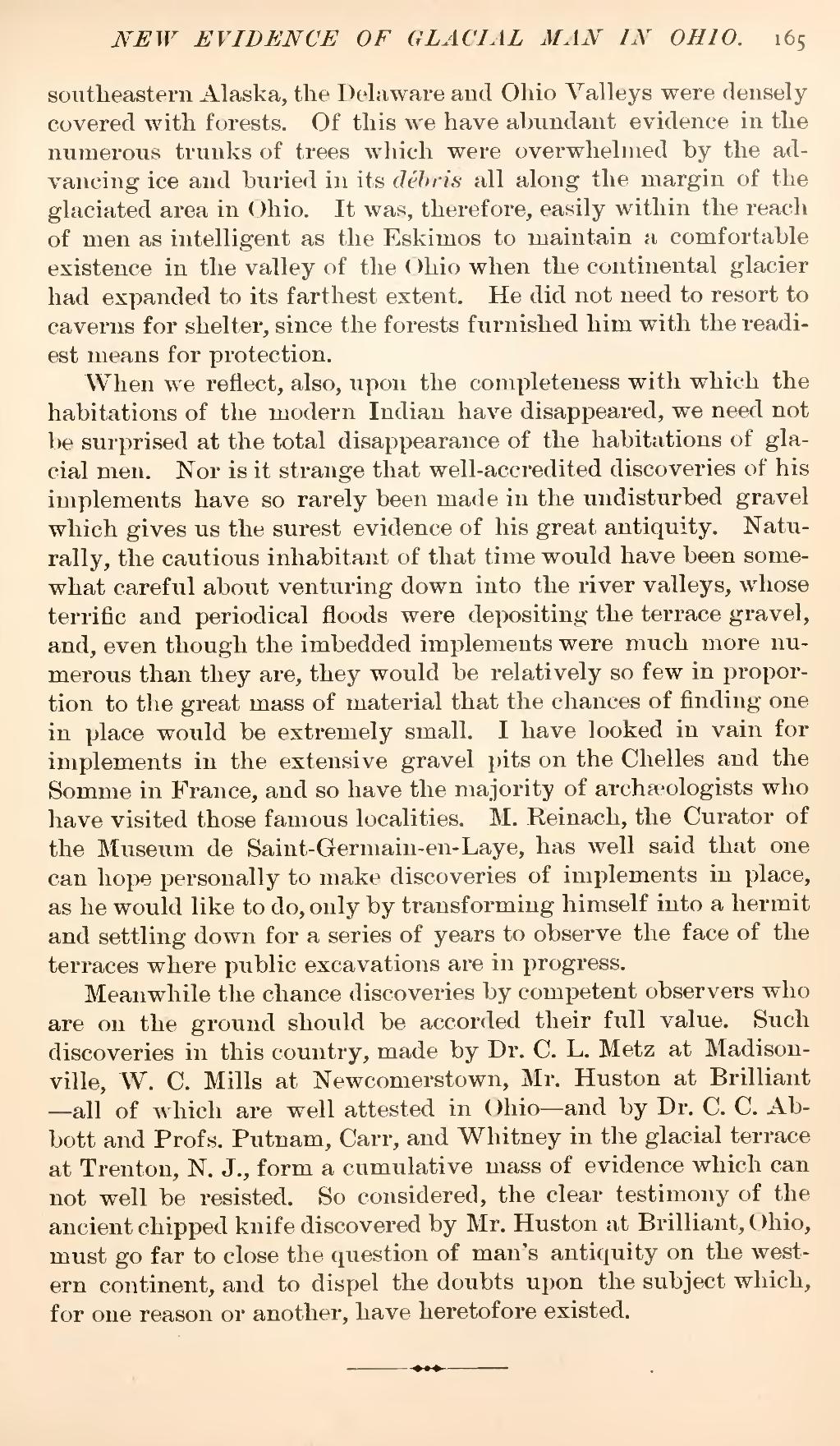southeastern Alaska, the Delaware and Ohio Valleys were densely covered with forests. Of this we have abundant evidence in the numerous trunks of trees which were overwhelmed by the advancing ice and buried in its débris all along the margin of the glaciated area in Ohio. It was, therefore, easily within the reach of men as intelligent as the Eskimos to maintain a comfortable existence in the valley of the Ohio when the continental glacier had expanded to its farthest extent. He did not need to resort to caverns for shelter, since the forests furnished him with the readiest means for protection.
When we reflect, also, upon the completeness with which the habitations of the modern Indian have disappeared, we need not be surprised at the total disappearance of the habitations of glacial men. Nor is it strange that well-accredited discoveries of his implements have so rarely been made in the undisturbed gravel which gives us the surest evidence of his great antiquity. Naturally, the cautious inhabitant of that time would have been somewhat careful about venturing down into the river valleys, whose terrific and periodical floods were depositing the terrace gravel, and, even though the imbedded implements were much more numerous than they are, they would be relatively so few in proportion to the great mass of material that the chances of finding one in place would be extremely small. I have looked in vain for implements in the extensive gravel pits on the Chelles and the Somme in France, and so have the majority of archaeologists who have visited those famous localities. M. Reinach, the Curator of the Museum de Saint-Germain-en-Laye, has well said that one can hope personally to make discoveries of implements in place, as he would like to do, only by transforming himself into a hermit and settling down for a series of years to observe the face of the terraces where public excavations are in progress.
Meanwhile the chance discoveries by competent observers who are on the ground should be accorded their full value. Such discoveries in this country, made by Dr. C. L. Metz at Madisonville, W. C. Mills at Newcomerstown, Mr. Huston at Brilliant—all of which are well attested in Ohio and by Dr. C. C. Abbott and Profs. Putnam, Carr, and Whitney in the glacial terrace at Trenton, N. J., form a cumulative mass of evidence which can not well be resisted. So considered, the clear testimony of the ancient chipped knife discovered by Mr. Huston at Brilliant, Ohio, must go far to close the question of man's antiquity on the western continent, and to dispel the doubts upon the subject which, for one reason or another, have heretofore existed.
